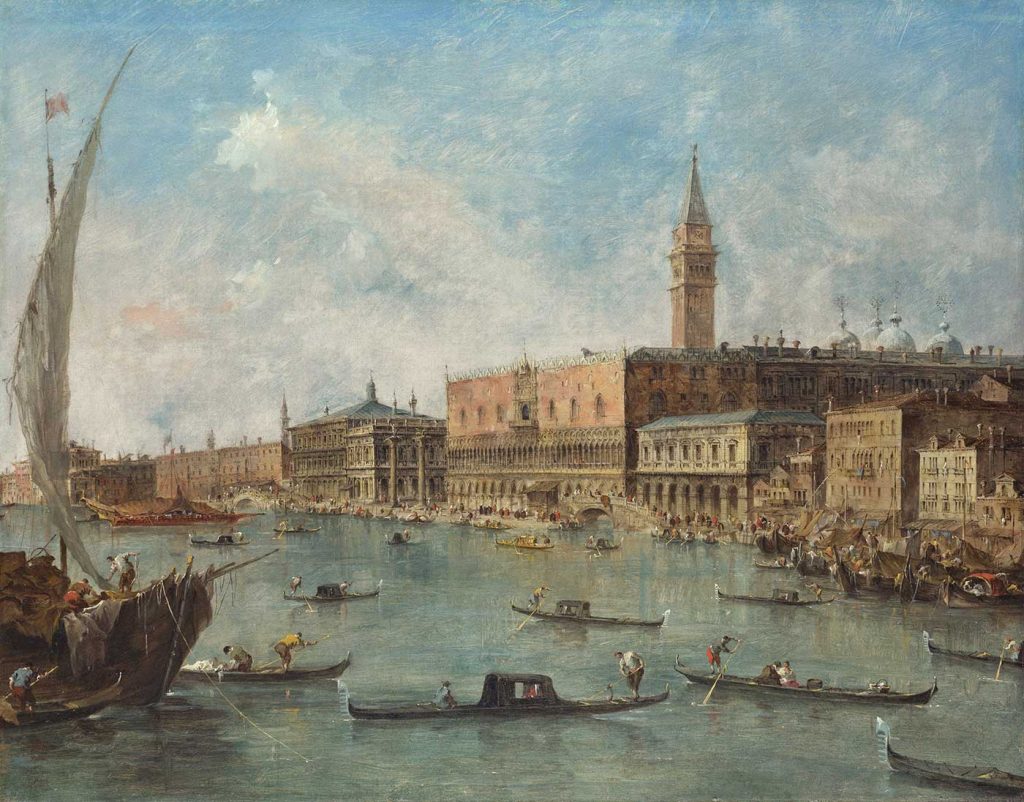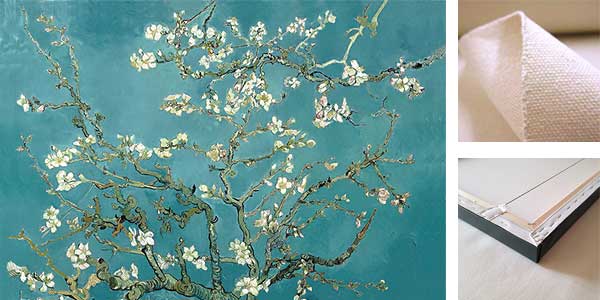
Venice The Doge’s Palace and the Molo by Francesco Guardi was created in 1770. The painting is in National Gallery, London. The size of the work is 58,1 x 76,4 cm and is made of oil on canvas.
About the Work
Guardi delighted in capturing the charm of his beloved Venice, and here he has given the city a soft, powdery appearance and dreamy atmosphere. As in its companion picture, Venice: The Punta della Dogana with S. Maria della Salute, trade is the focus in the foreground of this painting, with Venice’s grand architecture beyond. For centuries, Venice had been a thriving commercial centre and a popular destination on the main trading routes across the Mediterranean; as an island, everything inhabitants needed came by boat.
In the left corner, a large barge filled with goods is at anchor; its sail is being lowered. Guardi frequently framed his scenes using a curved white sail in the foreground, as in Venice: The Guidecca with the Zitelle (he also sometimes used a mast without a sail, like in View of the Venetian Lagoon with the Tower of Malghera). The basin of San Marco and the quayside are a hive of activity. A group of tightly packed fishing boats or trading vessels on the far right almost merge with the shops behind; the men are little more than daubs of colour, but Guardi still managed to portray their industriousness. Read more in National Gallery, London.
Abot the Artist
Francesco Lazzaro Guardi ( 5 October 1712 – 1 January 1793) was an Italian painter, nobleman, and a member of the Venetian School. He is considered to be among the last practitioners, along with his brothers, of the classic Venetian school of painting.
In the early part of his career he collaborated with his older brother Gian Antonio in the production of religious paintings. After Gian Antonio’s death in 1760, Francesco concentrated on vedute. The earliest of these show the influence of Canaletto, but he gradually adopted a looser style characterized by spirited brush-strokes and freely imagined architecture.
Francesco Guardi was born in Venice into a family of nobility from Trentino. His father Domenico (born in 1678) and his brothers Niccolò and Gian Antonio were also painters, later inheriting the family workshop after the father’s death in 1716. They probably all contributed as a team to some of the larger commissions later attributed to Francesco. His sister Maria Cecilia married the pre-eminent Veneto-European painter of his epoch, Giovanni Battista Tiepolo. Read more in Wikipedia.
Order a reproduction of this work (printed on canvas)
